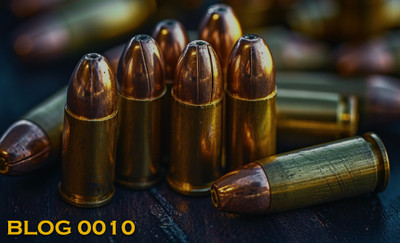


There is no easy answer; at best, it is a scientific guess. When it comes to concealed carry, how many rounds a person should carry is hotly debated. While opinions vary widely depending on personal experience, local environments, and perceived threats, choosing the right amount of ammunition is a balance between preparedness, comfort, and practicality. Let’s break down key factors when deciding on the optimal number of rounds to carry.
The average self-defense encounter involving a firearm is typically short, fast, and happens at close range. Studies from the FBI and other law enforcement agencies suggest most self-defense shootings occur within 7-10 yards and last only a few seconds. The number of rounds fired in these scenarios is typically low, often between 2-5 shots. Based on this, some might argue carrying a small, lightweight handgun with 6-10 rounds is sufficient. There are no guarantees in real-life scenarios. Multiple assailants, poor marksmanship, or greater engagement distance can drastically increase the rounds required. This uncertainty is why many choose to carry more rounds, even if the statistical average suggests fewer.
The firearm capacity will often dictate how many rounds to carry. Microcompact and subcompact handguns can hold 6-10 rounds. Compact handguns offer 15 plus rounds in standard magazines. For those who prefer deeper concealment or lighter firearms, a lower-capacity option is more appealing for everyday comfort. Still, others strike a balance between comfort and preparedness for peace of mind by carrying a higher-capacity firearm. Even when carrying a higher-capacity firearm, it is often recommended carrying an extra magazine. Reloading can be necessary in a prolonged encounter, especially if multiple attackers are involved or if several shots are missed.
Home and work environment plays a big role in how many rounds to carry. Low-crime areas can promote carrying a smaller, lower-capacity handgun. If unfamiliar with the environment, some go “heavy” and carry extra ammunition. Working or traveling in higher-risk areas where violent crime is more common makes carrying extra rounds or a higher-capacity firearm more appropriate. Additionally, those who are more active, violent crime victims, or have specific personal threats may find carrying additional magazines or rounds is not just prudent, but necessary.
Ultimately, the loadout has to be comfortable for regular all-day carry. A small, lightweight firearm with fewer rounds is easier to conceal and may be more comfortable for extended wear. Conversely, carrying extra magazines and a higher-capacity firearm can become bulky and uncomfortable, which may deter you from carrying consistently. Finding the right balance between comfort and preparation is key.
The optimal number of rounds to carry depends on several factors, including the firearm’s capacity, skill level, environment, and comfort level. A good balance between readiness and practicality is carrying at least one magazine’s worth of rounds (6-15 rounds), with an additional magazine for backup. Be comfortable, but also keep in mind it’s better to have a little more ammunition, rather than not enough in a critical situation.